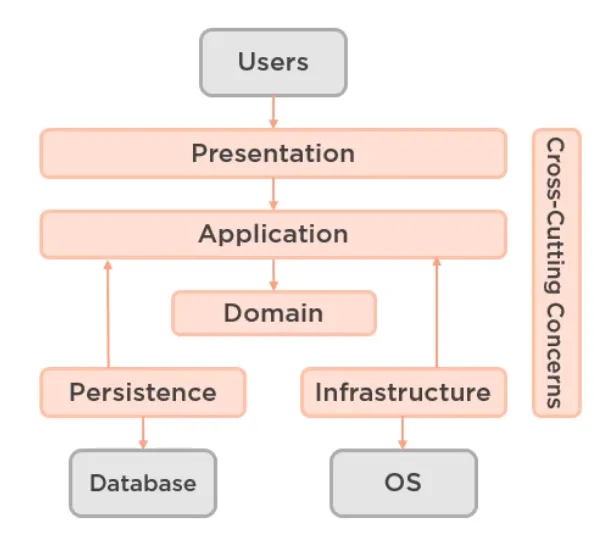ASP.NET Core Projects
Projects Organization
Our code could be split into the following projects:
- Domain - domain model
- Infrastructure - dependencies like OS
- Persistence - database (e.g., repositories)
- Application - business cases/business logic
- Presentation - controllers/pages
- Common - cross-cutting concerns

The interfaces for various things like database accessshould be stored in the Application layer. The Persistence/Infrastructure should depend on Application and contain implementations of the interfaces. It makes sense, because the database is the dependency of our Application. It’s the Application that contains the use-cases for our solution. Hence, it makes sense to define our requirements (interfaces) in the Application layer. We fulfill these requirements in Persistence/Infrastructure.
Use-Cases
Our Application layer should mostly consist of use-cases that should be available to the users via Presentation layer. These use-cases are basically the business logic. We could have:
- queries
- commands
This falls a bit into the CQRS topic, but I rather want to focus on the fact that both Commands and Queries are classes for specific use-cases. Within them we’d use the dependencies (like a database) to do the actual work.